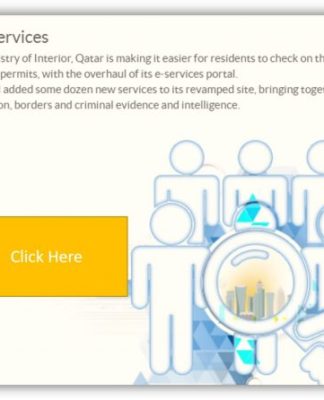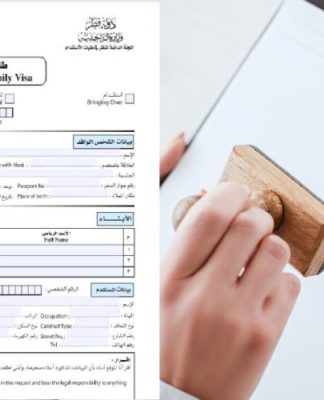Artificial intelligence is helping humans make better informed decisions.
From predicting wildfires to tailoring adverts, AI is playing a central role in modern life.
Its ability to sift through a mass of data and make instant connections makes it a useful tool across industry sectors.
But its usefulness also makes AI a potential threat, with experts warning about risks around privacy, bias, inequality, safety and security.
Artificial intelligence (AI) is often spoken about as a future technology. The reality is that it’s already very much part of our world and is helping humans make informed decisions every day.
The release of ChatGPT, an AI-based chatbot, in November 2022 was accompanied by both fanfare and controversy. But it was just the latest in a long line of AI-powered devices already in daily use.
AI’s ability to analyze huge amounts of data at speed is making it a useful decision making tool across sectors.
AI’s ability to analyze huge amounts of data at speed is making it a useful decision making tool across sectors. Image: Statista
From answering customer service queries to analyzing and predicting climate trends, AI is in use across industries and the public sector. Indeed, it is AI’s ability to analyze huge amounts of data at speed that is making it a useful decision making tool.
Yet its very usefulness also makes AI a potential threat. Cambridge University’s Centre for the Study of Existential Risk says that although AI has great potential, it creates risks around privacy, bias, inequality, safety and security.
DISCOVER
How is the World Economic Forum ensuring the ethical development of artificial intelligence?
While that debate plays out, AI is busy sifting through a mass of data and making connections humans can’t – saving time, money, and even lives.
How artificial intelligence is helping make informed decisions
Here are four ways in which AI is currently helping humans make informed decisions.
1. Fighting wildfires
The World Meteorological Organization predicted that climate change will lead to a 30% increase in the number of extreme fires by 2050, rising to a 50% increase by the end of the century.
Distant wildfire. Artificial Intelligence AI
AI can predict the location at which wildfires might break out. Image: Reuters/Ivan Alvarado
Launched by the World Economic Forum in 2022, the FireAld initiative aims to develop AI solutions which predict the location at which wildfires might break out, their likely severity and the best way to tackle them.
A major issue was inconsistencies in the way local weather data was reported and the Forum has urged public agencies to collaborate to ensure that AI tools have the best data from which to predict wildfires accurately.
2. Targeting the right customers
In tough economic times, it’s critical that marketing efforts reach the people most likely to buy products if businesses are to survive. Getting it wrong can be an expensive mistake. Globally, businesses spent over $567 billion in 2022 on digital advertizing.
Research by Deloitte found that AI could make a big difference by working out which channels people prefer to be contacted through and creating tailored messaging for individual potential customers.
The American Marketing Association is putting its ideas into practice by using AI to create personalized newsletters for each of its 100,000 subscribers.
3. Helping firefighters see through smoke
When a fire crew arrives at a burning building, how do they decide where to go? Handheld thermal imaging cameras have their limitations, but in 2022 the Scottish Fire and Rescue Service trialled an AI-based system which helps firefighters find trapped people faster.
Using radar and movement sensors in addition to thermal imaging, the helmet-mounted device provides a clear image of the interior of burning buildings to enable firefighters to make rapid decisions about where to find victims and colleagues.
Man walking through a flood. Artificial Intelligence AI
AI can help people get back on their feet after natural disasters like floods. Image: Reuters/Eloisa Lopez
AI is also playing a role in helping people get back on their feet after fires and natural disasters like floods. Drone images of affected properties are analyzed by insurer SwissRe’s AI-powered Rapid Damage Assessment tool to speed up the processing of claims.
4. Detecting disease
In the health sector, AI is having a big impact. Indeed, by 2026, two-thirds of medical imaging processes are expected to use AI to detect diseases and guide treatment.
Microsoft is developing AI models that use a hospital’s own data to automatically highlight tumours and healthy organs on patient scans, helping oncologists decide on the most effective, individualized cancer treatments for their patients.
Have you read?
What is artificial intelligence—and what is it not?
Here’s how artificial intelligence can benefit the retail sector
Here’s how AI can help fight climate change
Don’t miss any update on this topic
Create a free account and access your personalized content collection with our latest publications and analyses.
License and Republishing
World Economic Forum articles may be republished in accordance with the Creative Commons Attribution-NonCommercial-NoDerivatives 4.0 International Public License, and in accordance with our Terms of Use.
The views expressed in this article are those of the author alone and not the World Economic Forum.
Related topics:





























